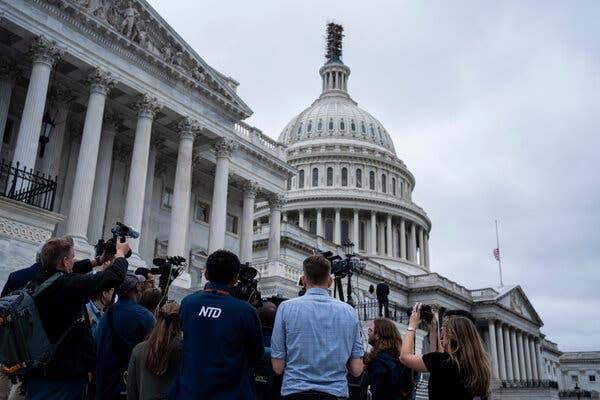With Congress stalled and few concrete instructions coming from agency leadership, thousands of federal employees are quietly preparing for a worst-case scenario: a partial government shutdown that could begin as early as Oct. 1. The lack of clear, centralized guidance is leaving workers to make personal financial and logistical plans with scant information about who will be sent home, who will continue working and when pay would resume.
Lawmakers failed to clear a path to a short-term funding bill this month, leaving the federal government racing toward the end of the fiscal year. The Senate rejected a House-passed continuing resolution that would have extended funding through November, and rival proposals stalled in the upper chamber, shrinking the chances that Congress will avert a lapse in appropriations before the deadline.
The Office of Management and Budget has told agency leaders to draw up contingency plans that include the possibility of large layoffs if a shutdown materializes — guidance that has unsettled employees who say they were given little context or explanation. The memo, circulated in recent days, instructed agencies to evaluate staffing and resource reductions that could go beyond routine furlough procedures.
At the same time, the Office of Personnel Management has posted the standard human-resources advice agencies use in shutdown situations — explaining furlough types, excepted (essential) employee rules, and pay policies — but that guidance can feel academic to workers facing immediate bills and child-care decisions. Furloughed workers typically do not receive paychecks while a shutdown is underway, although Congress has historically approved retroactive back pay once funding resumes.
Many agency leaders have tried to strike a balance between caution and calm, telling staff not to panic while urging them to prepare. In some departments, supervisors have asked employees to update contact information, identify mission-critical roles and submit preliminary plans for temporary duty transfers — standard contingency steps that nonetheless underscore the uncertainty ahead. Still, rank-and-file employees report uneven communication and a lack of detail about how decisions will be made.
The political choreography on Capitol Hill has added to the unease. The White House scheduled meetings between the president and top congressional leaders this week as lawmakers continued to trade blame over funding priorities and procedural votes, but negotiations so far have produced no consensus on a clean short-term funding fix. That leaves the executive branch and federal workforce watching a timetable that could tighten within days.
Beyond the immediate personnel questions, watchdog groups and analysts warn that a shutdown — or even the political brinkmanship surrounding one — can cause real programmatic harm. Recent reporting shows that administration-level delays and selective withholding of funds have already threatened certain programs and research centers, illustrating how fragile some federal operations are when budget lines come under stress.
Union leaders and employee advocates say agencies can and should do more to limit confusion. Labor groups have pushed for clearer, earlier notifications of who will be considered excepted, better support for workers who will miss paychecks, and faster internal decision-making so employees can plan. Agencies, for their part, point to the legal and operational constraints that limit what they can promise before appropriations are finalized.
What federal workers can expect if a shutdown starts is familiar but brutal: many nonessential staff will be furloughed — placed on temporary leave without pay — while a subset of mission-critical employees will be required to keep working without immediate pay. Agencies will publish official lists of excepted and furloughed positions only once funding has lapsed or appears imminent; until then, uncertainty will persist.
For now, employees are taking practical steps. Some are adjusting budgets, postponing discretionary spending, lining up emergency childcare, or checking with unions about hardship funds. Others are treating recent internal messages from agency leaders as provisional and keeping open lines of communication with supervisors. Even those efforts don’t replace the peace of mind that steady pay provides.
As the calendar moves inexorably toward Oct. 1, federal employees, agency managers and Capitol Hill negotiators will be tested by two parallel pressures: the technical mechanics of shutting down parts of a sprawling government and the political dynamics that have made timely appropriations a rare achievement. For workers caught between both, clarity — and a timely deal — can’t come soon enough.










